5 Lessons from IKEA on How to Design a Better Procurement Process
Adoption of a procurement process relies just as much on psychology as it does on policy. The design and pathing experience of an IKEA store provides a useful parallel for building a successful guided buying experience with employees.

A strange thought overcame me as I wandered through my local IKEA recently: this place is the physical embodiment of an e-procurement system.
That might sound crazy, but bear with me. Everything from the layout to the psychology behind the displays to the policy explanations around the store add up to a real-world experience of a purchasing flow. It's all about nudging people toward desired outcomes and subconsciously convincing them to behave the way you want them to. Instead in your business it's about persuading stakeholders to take ownership of compliance and budget choices, not getting them to impulse-order some meatballs.
Seriously, there are some practical lessons you can take from IKEA and design into your procurement process. Come with me on a trip and consider these five most interesting insights:
- The Shape of Your Purchasing Workflow Determines Stakeholders Success
- Stakeholders Need to Feel They Have Skin in the Game
- Proactively Offer Help and Guidance at Every Point in the Purchasing Flow
- Integrate Risk Prevention In Context Where It's Needed
- Write a Procurement Policy that Persuades, Not Forces Compliance
1. The Shape of Your Purchasing Workflow Determines Stakeholder Success
A frequent challenge for stakeholders when interacting with a procurement process is that they get stuck. Whether it's an error issue in a form or a document they need to onboard a vendor, stakeholders get lost in the process and end up sending an email to get unstuck.
Instead of process bottlenecks, you want seamless people flow from purchase request intake all the way to vendor payment. You want the flow of an IKEA store layout.
If you've never experienced the thrill of an IKEA trip, it's basically this. There are three floors. Upon entering, you're guided from the ground floor to the top floor, where you follow a circular layout through showrooms until you descend in a corkscrew path to the ground floor again. Along the way, you write down the name and catalog details for what you want to purchase, and when you get to the ground floor, you pull your selections from the warehouse and bring them to checkout.
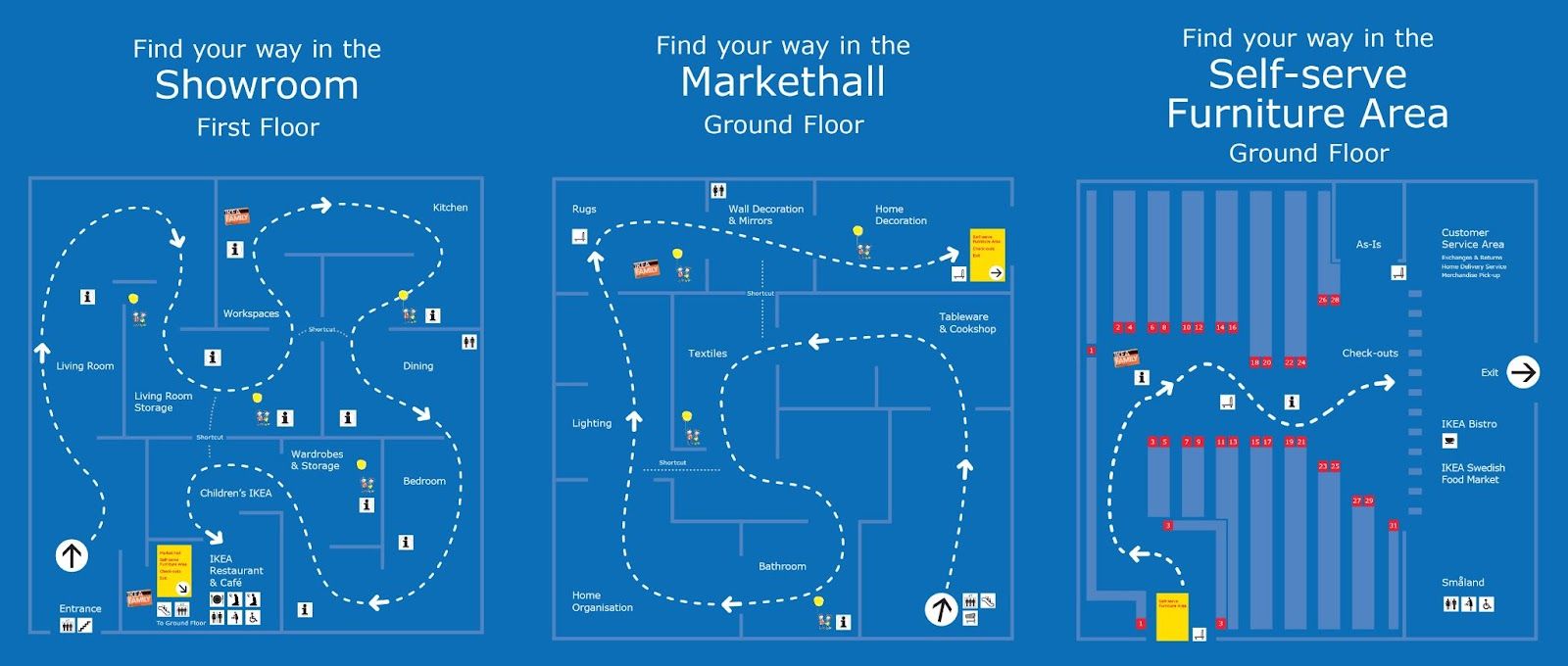
A critical part of this experience is that any visitor, even a first-time visitor, knows exactly where to go as soon as they enter the store. There's one way in, and it's up this escalator:
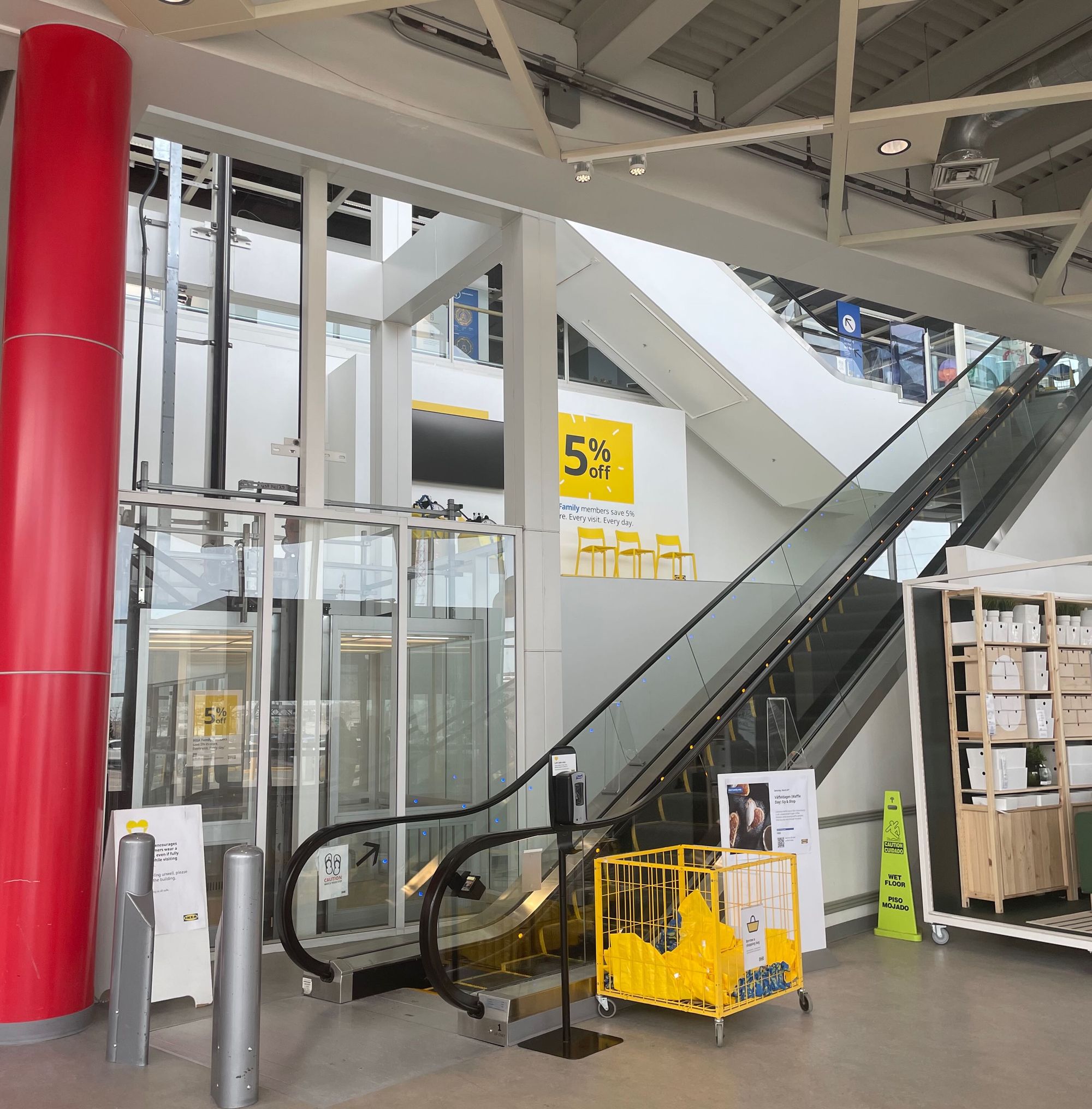
From there, IKEA leads customers through a "maze" layout. The pathing is designed to show you more stuff, increase time spend in the store, and encourage you to buy more things. They even limit the amount of light and noise available to induce something called the Gruen effect, in which a layout causes shoppers to forget their initial intentions when entering a store, making them susceptible to impulse buys.
Obviously in procurement you don't want impulsive spending. But what you do want is a clear starting point for a purchase request and a way to push people along through the approvals process. The experience of walking through the IKEA showroom is one of walking through a physical catalog. You see everything IKEA wants to you see, and when you're not sure what to do next, the layout gently nudges you with visual cues toward the next step:

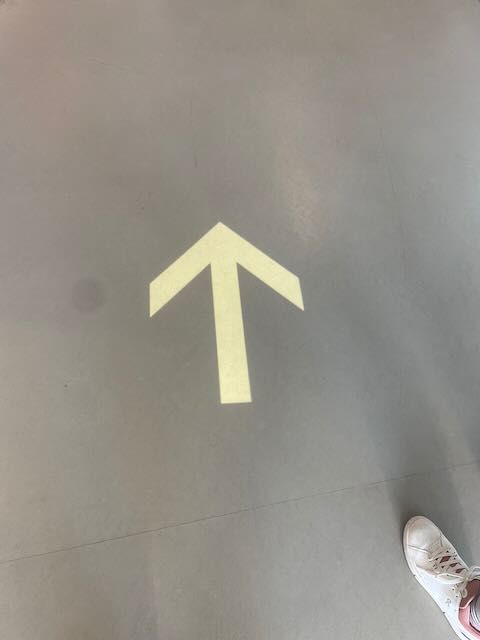
Crucially, the layout is designed not to overwhelm the customer with possible paths. The experience instead pushes just a bit more information or purchase offers, but because of the circular layout, you can't fully see around to the next corner. This creates an important emotional experience for the shopper. As one consumer psychology researcher put it, "The fact that you can’t see around the next corner also creates a subconscious sense of mystery, which draws the customer gradually further into the store."
Imagine if your stakeholders could say the same: going through the purchase request/approval process creates a sense of possibility and mystery!
How to apply this to your procurement process:
- Create a single front door/flow to the purchase request process to draw stakeholders in effortlessly
- Communicate a clear sequence of workflow steps and push information to stakeholders frequently about where they need to go next
- Don't overwhelm your stakeholders with 100-page guides/instructions — provide simple, in-context nudges and directions to keep them in the purchasing flow
- Build emotional buy-in — the deeper a stakeholder is in the procurement process, the more bought into completing the process they'll be
2. Stakeholders Need to Feel They Have Skin in the Game
Especially for areas like tail spend, there's often a contradiction between the cost of finance/procurement employee involvement and the value of the purchase in question. For one-off or low-value spend, enabling some form of self-service is the better outcome, rather than central control.
The question then becomes how to enable this effectively, especially when you're pushing transactional work onto other departments. IKEA does this in an impressive way: it convinces customers to find all of their furniture in a warehouse, load it onto a cart, check out while being monitored by cameras, then drive their furniture home and assemble it themselves.
If it were any other retailer, this would sound insane. And yet people willingly take part in this process every day at IKEA.
There are a few different ways the store designers do this. The first is the showroom displays, which let you sit in rooms and touch many different objects in the context of a furnished room. Consumer psychology research shows that the simple act of touching products can increase your overall perceived value of the product. IKEA stores let you do this frequently.
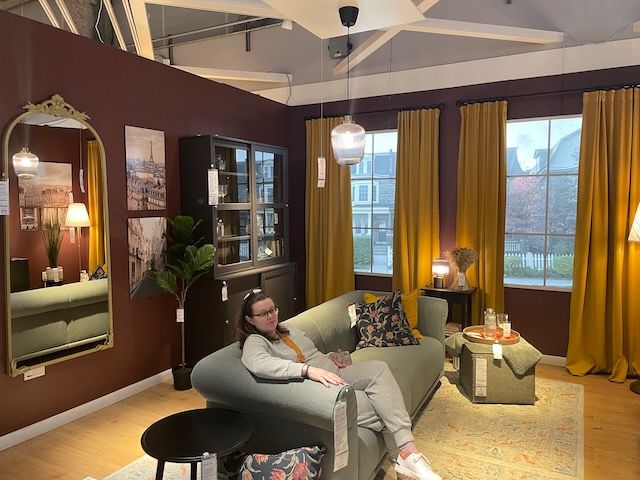
Similarly, the design of the item selection process creates emotional involvement for the customer. When shoppers have to look at the item tags and write down the warehouse item data (aisle and bin numbers) for their selections, they activate something called the "endowment effect" — a phenomenon where people feel more attached to an object or outcome because they feel they have ownership over it.
So by the time they get to the self-service area of an IKEA, customers both have an emotional connection to their purchases and a feeling of ownership over the process, which motivates them to lift very heavy boxes by themselves and personally load them into their cars.
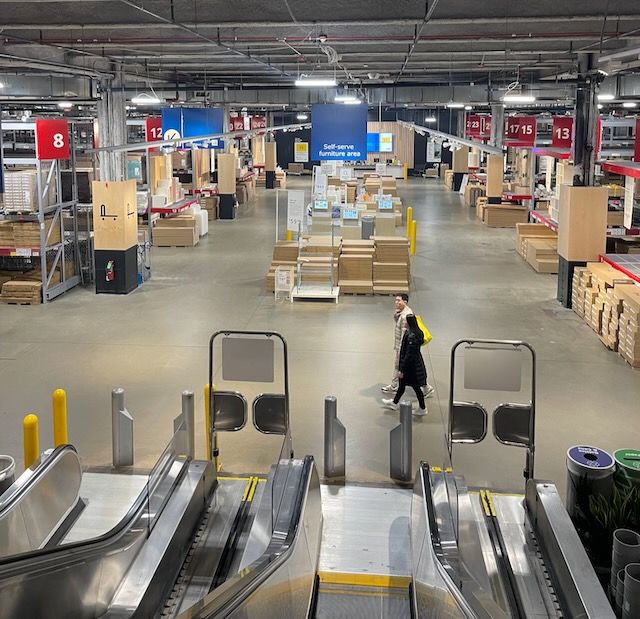
This sentiment is what you need to get self-service purchasing processes adopted. As the consumer psychology researcher Paul Harrison put it, the shopping process at IKEA "gives consumers a sense of achievement." Your stakeholders need to feel the same way after during and after completing a purchase, too.
How to apply this to your procurement process:
- Give stakeholders a clear high-level timeline and steps for the process so they feel involved to the point that the process is "theirs"
- Clearly show how supplying needed information (e.g., insurance documentation, supplier qualification data) fits into the approval flow and will move the purchase along
- Integrate needed data and other source systems (e.g., CLM, GRC) along the approval workflow so that when blocks appear, stakeholders don't have to leave the workflow to get to the end
3. Proactively Offer Help at Every Point in the Purchasing Flow
The unfortunate truth about a lot of procure-to-pay systems is that getting a purchase done requires tools outside the tool. The reason for all of these outside tools is because the procurement process lacks the context or guidance for stakeholders to get their purchases done the right way. So they leave the system to ask for manual help.
At IKEA, even though the design of the store is immersive, it's not perfect. You can get lost, and the experience can be stressful for some. That's why there are real humans, helpful tools, and subtle guidance along the way to unstuck people before they get too frustrated.
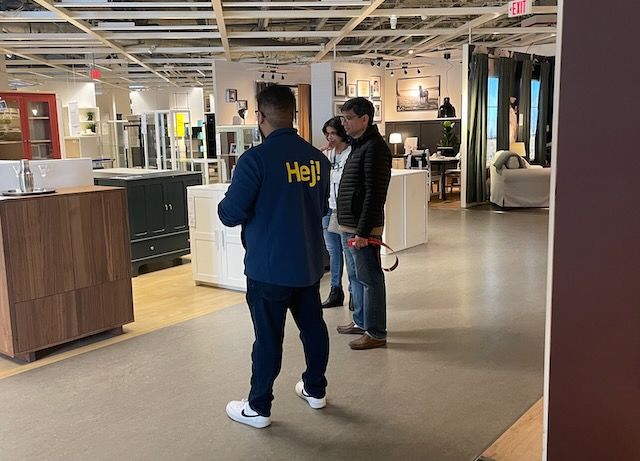
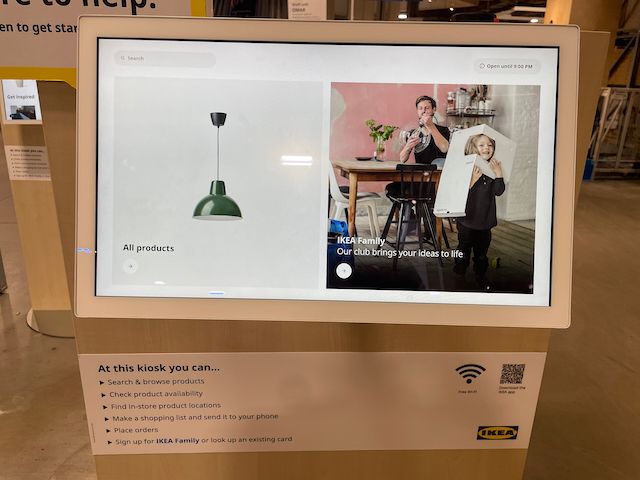
In procurement, you want to guide people to not only the preferred source of supply (i.e., approved suppliers) but also toward your policy goals. If that includes a specific split of diverse and/or local suppliers, that information needs to be proactively surfaced to stakeholders as they are guided through the procurement process. IKEA does this subtly with its own products as you walk through the physical catalog, telling you how and why they make specific design choices and how these affect the ethical or sustainable production of a product.
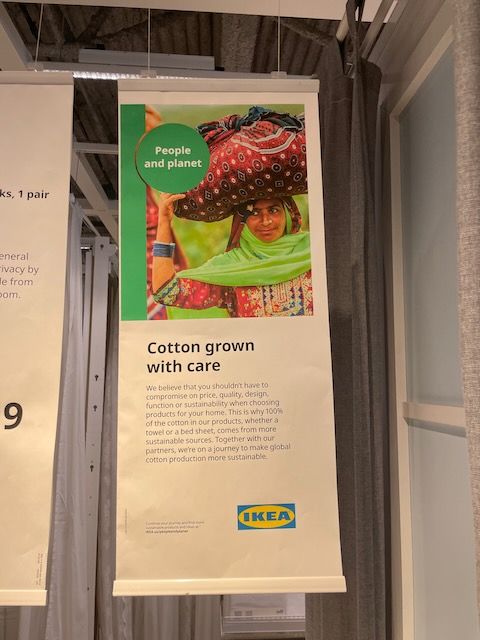
What's more, IKEA helps you figure out not just what to do, but how to do it correctly and quickly. Especially toward the end, when you want to be done with the process, the store provides helpful hints on how to finish strong:
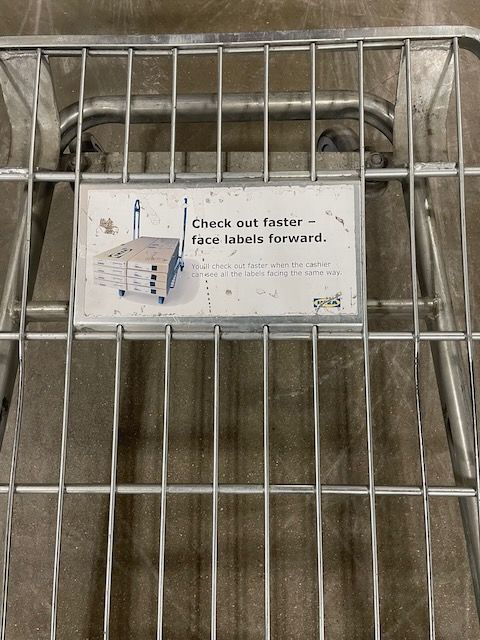
How to apply this to your procurement process:
- Put help text into forms and workflows to improve stakeholder understanding of what they're doing and why information is needed
- Dedicate a small number of procurement ops resources to being available to "help desk" common concerns for difficult purchase types
- Include your policy goals as "value-add" information that influences what stakeholders want to buy and who they consider buying from
4. Integrate Risk Prevention In Context Where It's Needed
The downside of self-service purchasing is, of course, the potential risks you open the business up to. A key reason to have a formal procurement process is to prevent risky vendor behavior. To address this, the process needs to include sufficient guardrails before you send people into the workflow.
At IKEA, there aren't exactly specific dangers in the store — besides losing that extra $300 you didn't plan to spend — but there are items that come with safety risks. Two common examples are children's furniture, which needs to be properly secured in some cases to prevent tip overs, and items that include glass (like mirrors), which IKEA asks you to pick up in a separate area to lower risks of injury in the warehouse section. These are some of the most notable disruptions to the layout flow, but they're integrated carefully to come up only once you're already committed to a purchase the requires extra steps to secure.
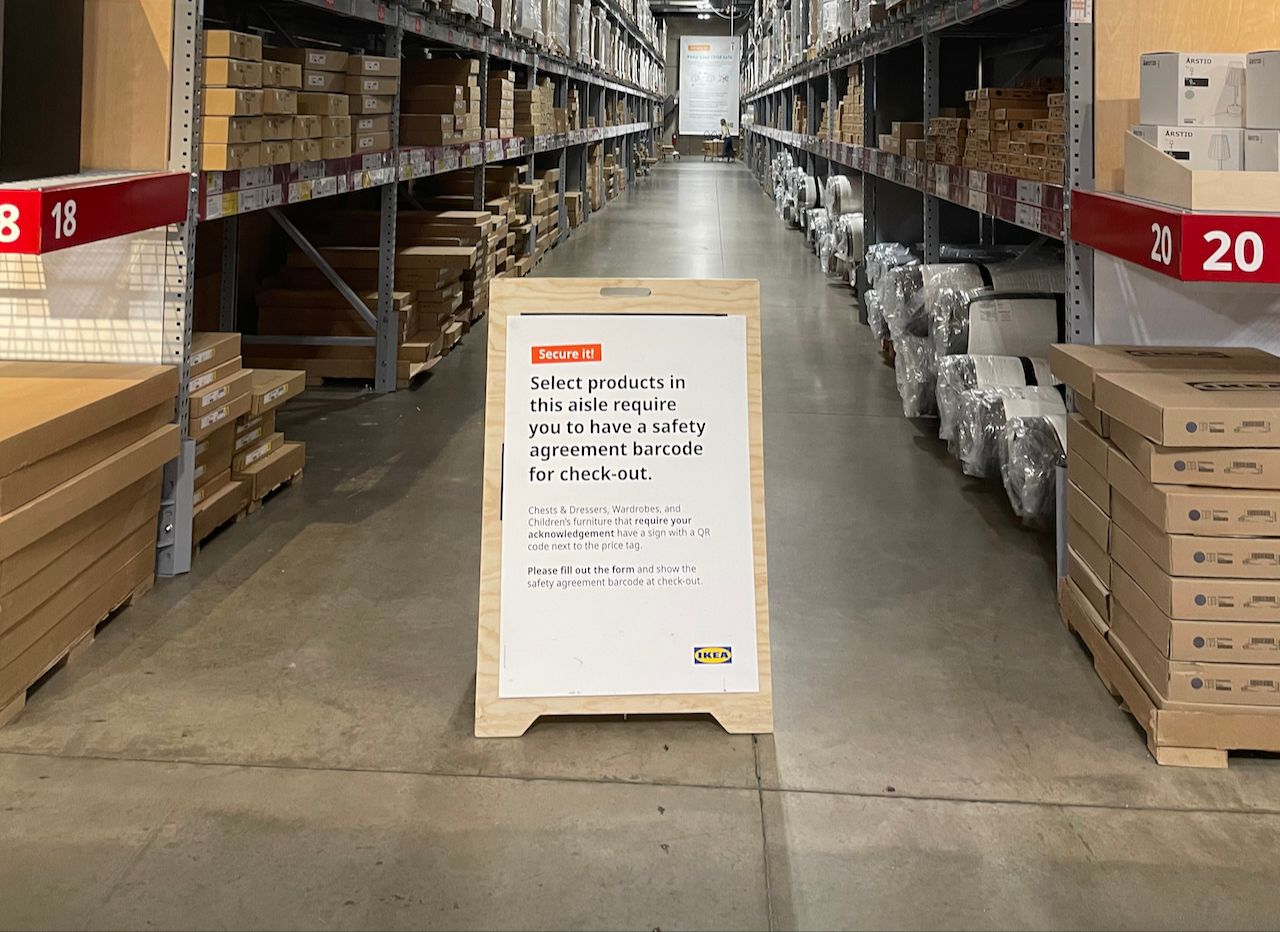
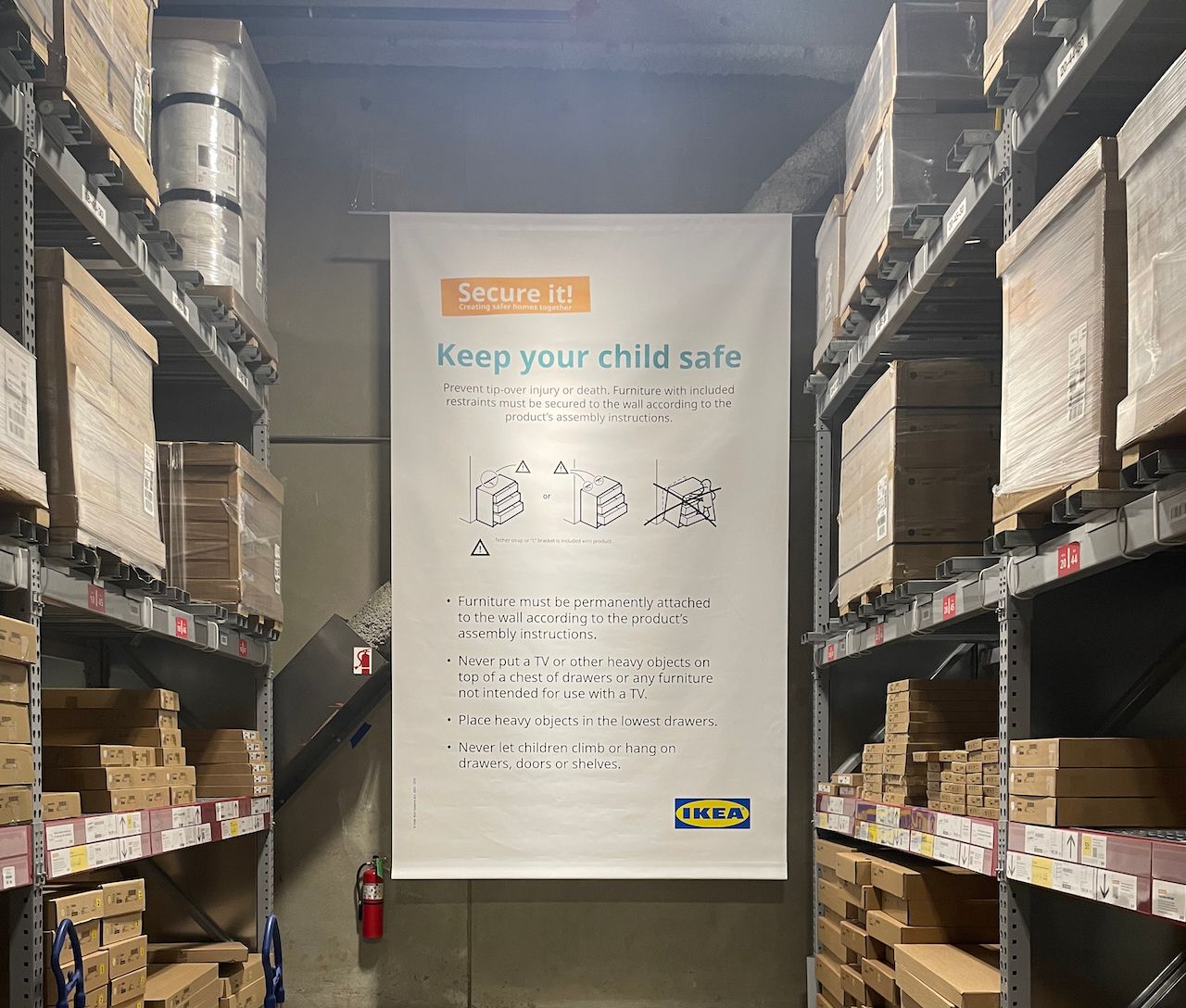
For these kinds of items, customers have to go to a help desk and get a unique barcode after affirming they understand the proper safety tasks. The same goes for potentially dangerous materials — the flow is separated from the standard process, which is slower but ultimately prevents more mishaps. Crucially, IKEA does this right at the end of the journey, so by the time you're inconvenienced you have enough ownership of the object to want to go out of the way.
How to apply this to your procurement process:
- Don't front-load risk documentation and data gathering in your purchasing flow; sequence it into the needed points with the correct stakeholders
- Make separate branches in the risk workflow as painless as possible — keeping other systems integrated (bi-directionally)
- Proactively surface the need for new updates and events like renewals, with sufficient forward notice (e.g., 90 days) for things like certifications and clear instructions about how to stay in compliance
5. Write a Procurement Policy that Persuades, Not Forces Compliance
Whatever procurement process you design should be the manifestation of a clear, well-reasoned broader procurement policy. But policies often have the misfortune of being merely read, or at best acknowledged.
So as we end our group trip to IKEA, I want to leave you with a question: How does IKEA get people to do so many things — pack and assemble their own furniture, buy whole room designs with minimal guidance — with enthusiasm?
It comes down to both the psychological principles discussed above and a gentle dose of persuasion in IKEA's marketing. In fact, this pitch — almost like its own procurement policy — is neatly summarized after you leave the checkout line:
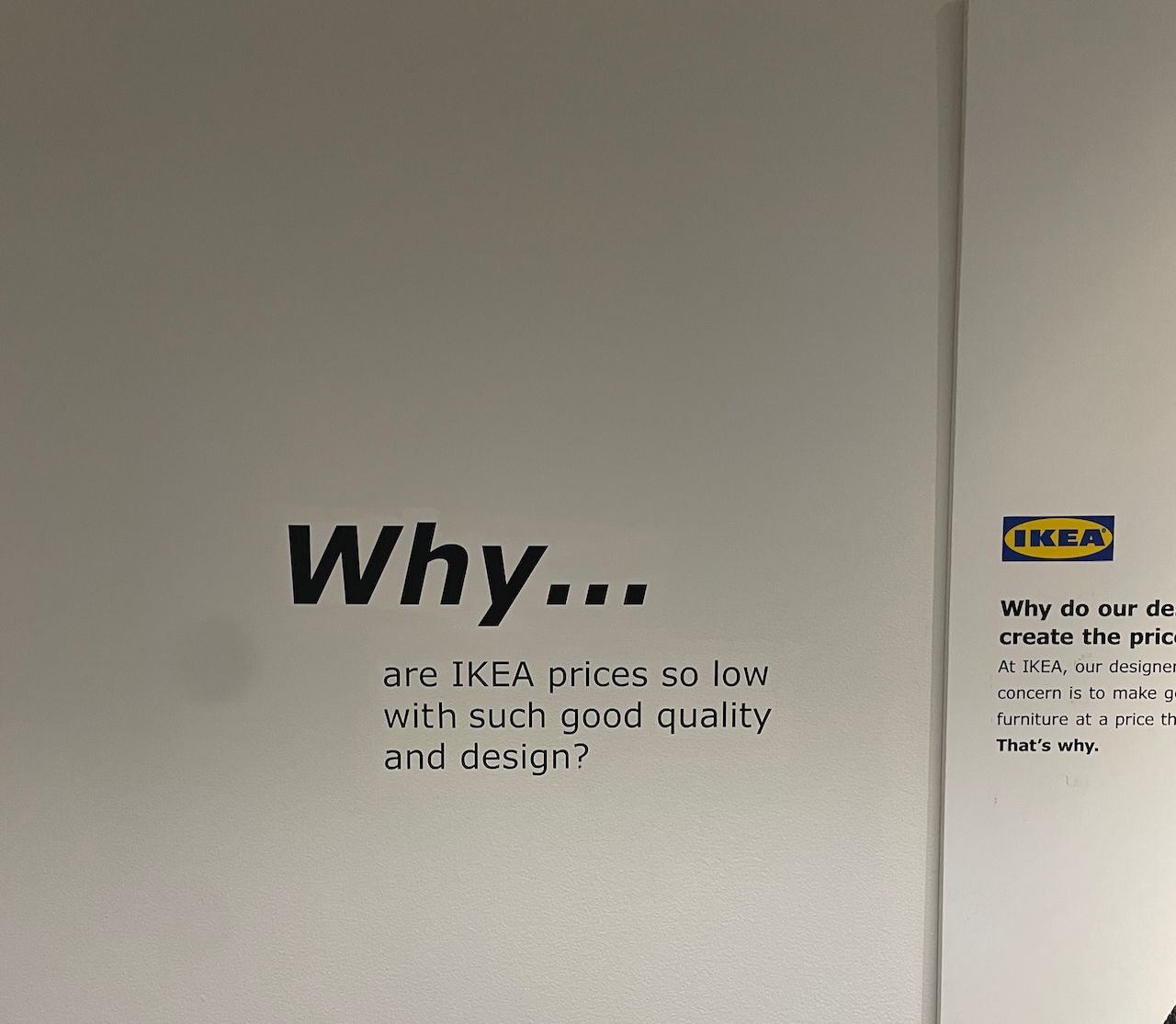

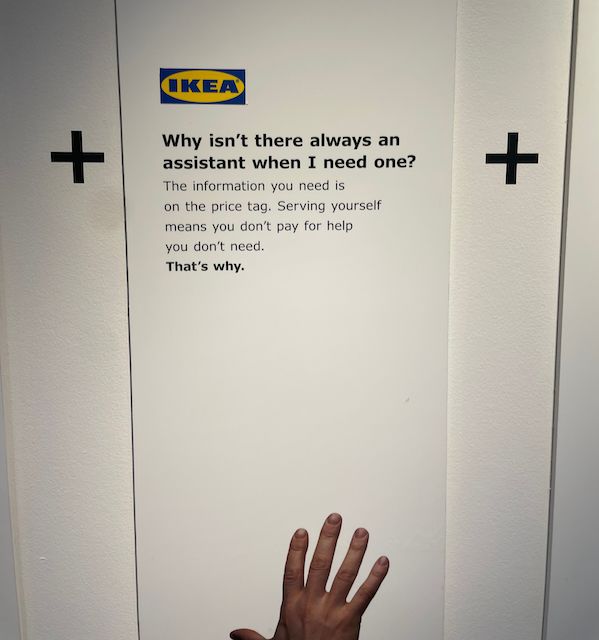
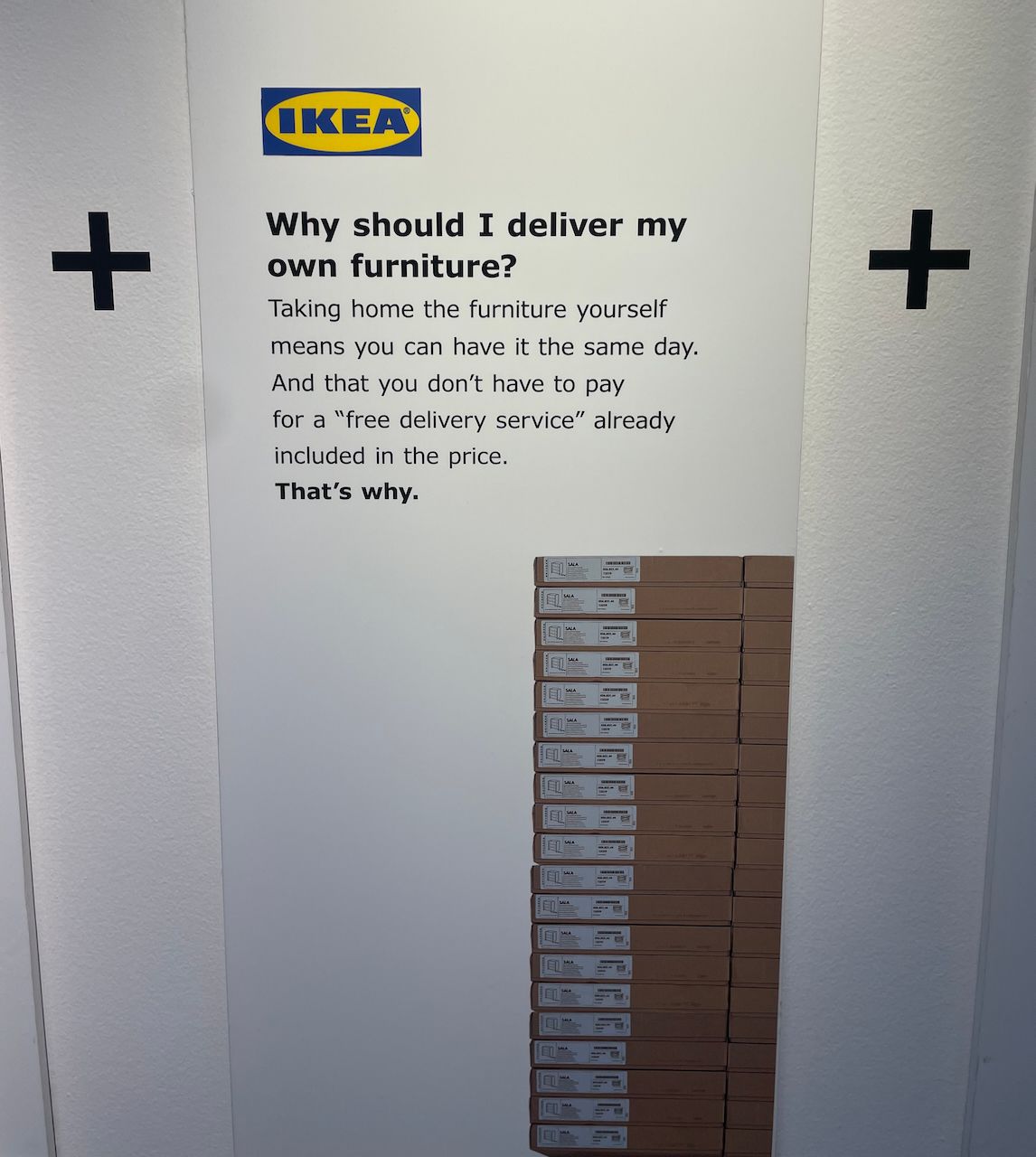
Your purchasing policy will obviously need to be more complex than a retail store's marketing materials. But if you leave with any lesson here, it's this: getting people to follow a process takes convincing and influencing, and that is best accomplished through smart design and nudges, not through top-down enforcement or threats. Can your procurement team summarize its policy in seven pithy slides? It might be a worthwhile exercise.
How to apply this to your procurement process:
- Write your procurement policy with the goal to persuade your stakeholders to participate, not to force them to comply
- Ensure your procurement process reflects the philosophy and psychology of your policy, to maximize the value of the latter
- Make your policy as catchy and memorable as possible — not a corporate memo to be read but a pitch to be enjoyed
And if anyone asks you again why they need to follow your procurement process, you can always shoot them an explanation with the clever response:
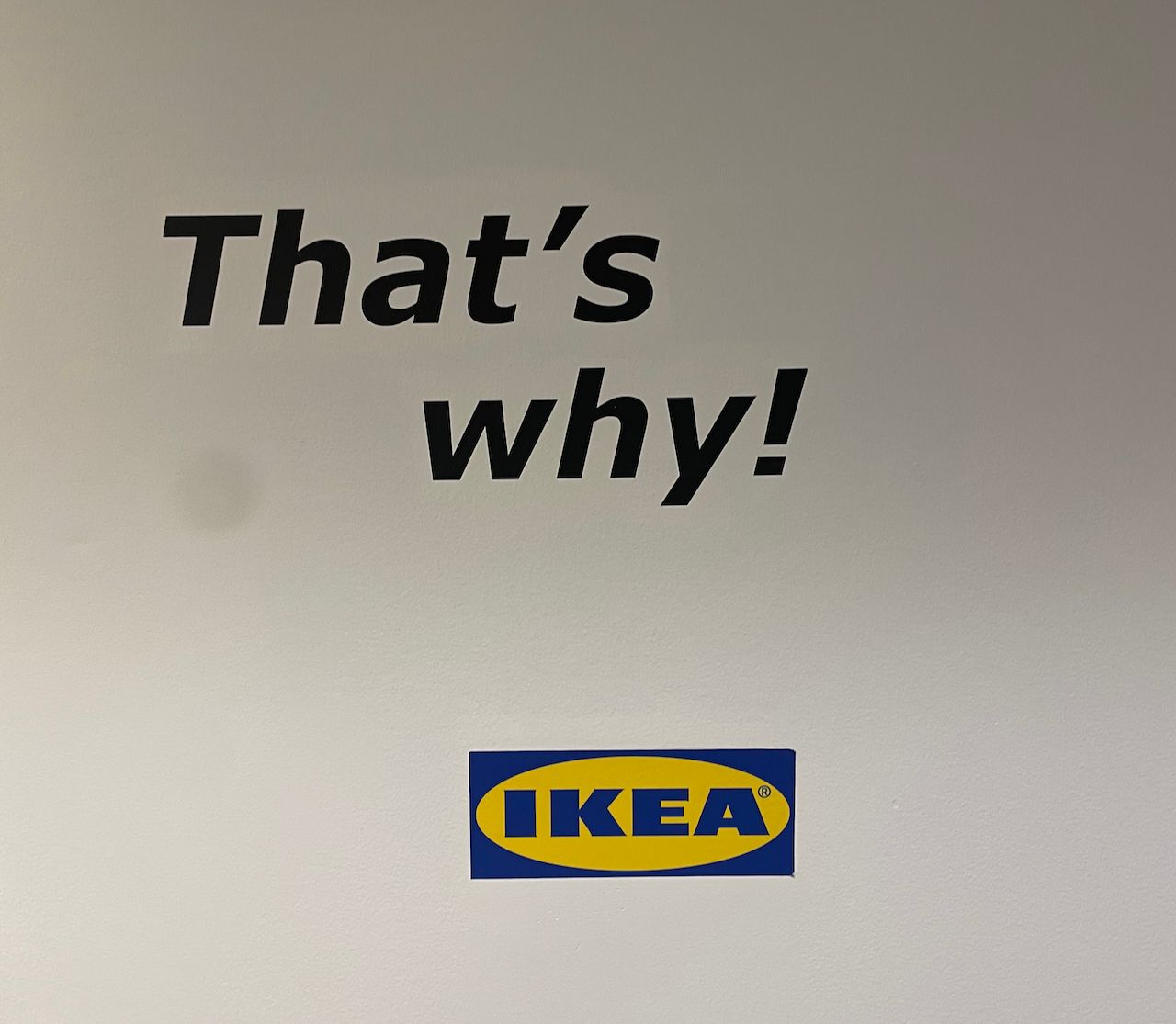
Enjoy this newsletter?
Sign up yourself if this was forwarded from a friend or colleague.
Need help with something? Hit reply to send us research questions or to say hello. We love to trade notes!
Interested in hearing more from Zip? Visit our website or sign up for company updates.
Note: By clicking subscribe you confirm that you have read and understood the Zip Privacy Notice that explains how we collect and use your personal information, and includes directions on opting out from our newsletter. If you have any questions, please reach out to privacy@ziphq.com.